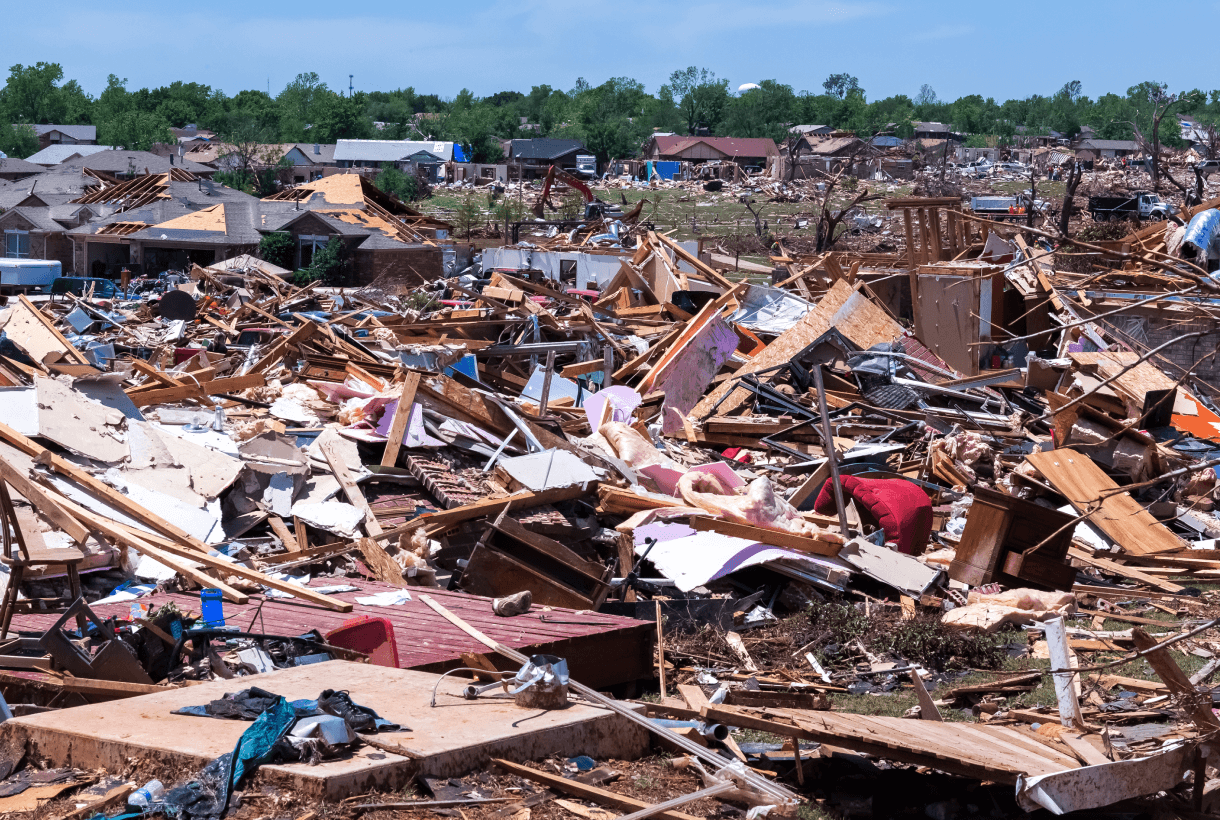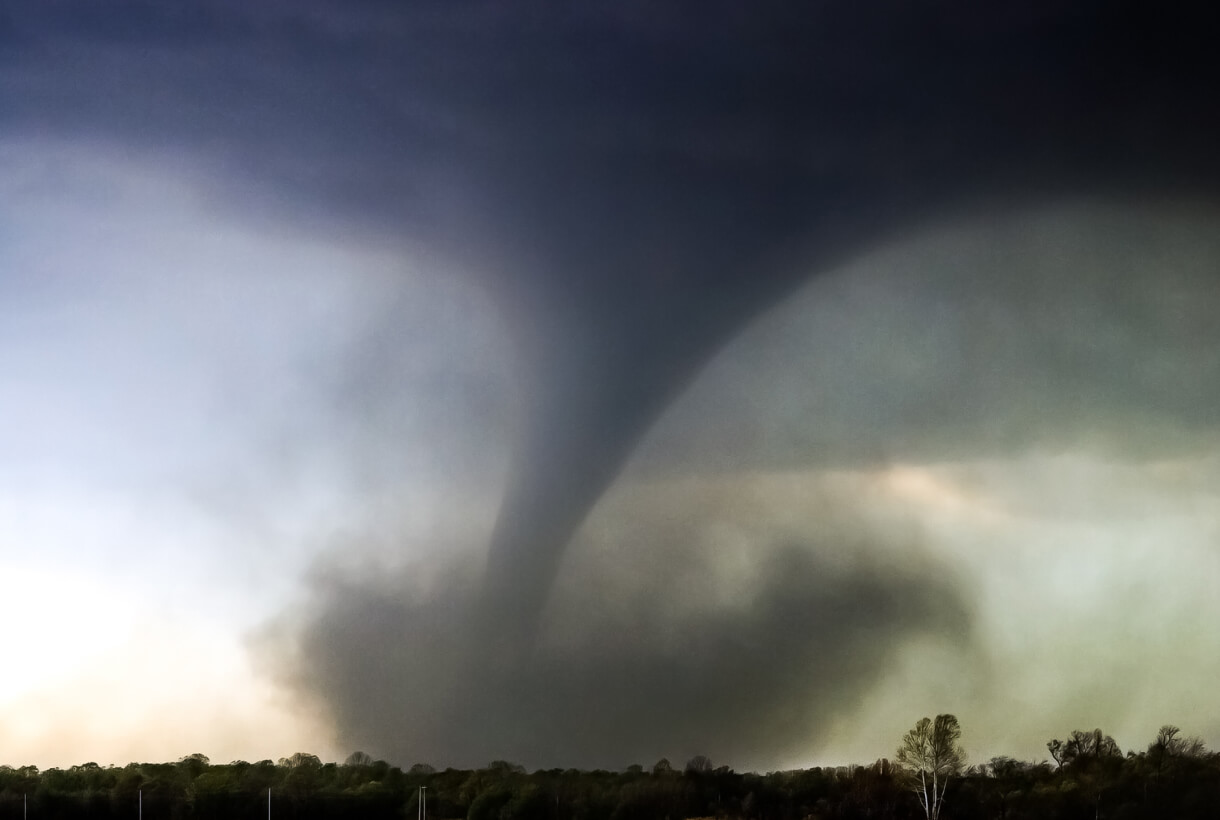When a tornado strikes, it happens fast. There’s little time to plan your response.
It’s imperative that organizations and governments take proactive steps to prepare for the risks posed by a critical event like a tornado. OnSolve data shows that extreme weather events are up 42 percent in the U.S. and Tornado Alley is moving eastward, with 57 percent of all U.S. tornado reports in the first half of 2023 being reported in the Southeast.
A successful plan includes a critical event management platform powered by artificial intelligence (AI). This will help you identify dynamic risk, inform and protect employees and citizens, and maintain operational continuity. When honed in unison, these efforts significantly improve your overall resilience.
Tornadoes and Dynamic Risk
Dynamic risk is defined by threats whose consequences are just as unpredictable as the critical event itself. Tornadoes are a prime example. Because the initial resulting damages are often catastrophic – loss of life and extreme property damage – organizations may overlook the secondary and tertiary harm, such as labor shortages and supply chain disruptions. Have you considered all of this in your business continuity plan?
Spring Storms: Preparing a Better Simulation for Tornado Preparedness
Learn from the experts and improve your tornado preparedness with tabletop exercises and other techniques by watching this webinar.
Critical Event Management Strengthens Resilience
While we can’t change the weather, we can definitely prepare for it and align priorities to achieve successful outcomes. A well-considered approach combined with the right technology can help you respond and adapt to tornadoes more effectively and minimize the resulting damages.
The OnSolve Platform for Critical Event Management (CEM) enables organizations to proactively anticipate, detect and mitigate physical threats and remain agile when a crisis strikes. When applied to the dynamic risk of tornadoes, CEM capabilities help significantly enhance your ability to mitigate risk, minimize damages and strengthen overall resilience.
Here are four key questions the right CEM platform can help you answer:
What’s Happened?
This capability aggregates complex data on any given situation, tracks feeds from thousands of sources, filters out the noise and then synthesizes the data to provide actionable information. This process must happen in real time so fast action can be taken to make a difference.
In the case of tornadoes, risk intelligence technology can help organizations and agencies more accurately pinpoint locations with increased vulnerability. By considering comprehensive factors such as topography, population density, housing composition and existing infrastructure, risk intelligence can better analyze where, when and how organizations and communities should focus.
What Can The Past Tell Us?
Access to historical risk data on tornadoes allows organizations to conduct geographical analysis and generate reports on targeted regions or facilities and timeframes. Analysis of tornado history makes it easier to identify the locations at greater risk so organizations can plan better and take proactive steps to prepare.
Who Do We Tell and How?
This component gives response teams a reliable means to send targeted, time-sensitive mass notifications to every person in the sphere of impact. To maximize effectiveness, you should be able to deliver geo-targeted, multi-language messages via phone, voicemail, email, SMS and desktop alerts, as well as integrate with IPAWS and other weather alerting systems.
When tornadoes are anticipated or imminent, alerts can be sent to residents and workers regarding evacuation routes and resources. If the tornado is worse than anticipated, it can be used to apprise everyone on the status of road impasses and utilities outages. As the situation unfolds, two-way communications allow people to mark themselves safe or request assistance. And when families are searching for lost loved ones, rescue workers can quickly get the word out as more people are located and brought to treatment centers and shelters.
What Do We Do About It?
This function accelerates and simplifies crisis response by helping response teams mobilize immediately. This makes it more feasible to provide secure, immediate instructions that are easy to escalate as the incident unfolds. During the tornado and in its aftermath, overlapping risks and their cascading damages can be addressed proactively, to limit preventable secondary and tertiary fallout. Damaged roadways, fallen power lines or other dangerous debris is often a major hazard. Incident management technology can ensure response teams are deployed to high-traffic intersections to render aid to people and animals taken unaware by sharp objects and tangled wreckage.
Make sure your organization and community are prepared in advance for tornadoes with a defined strategy to protect your people, places and property from unnecessary loss and devastation. Learn more by watching our on-demand webinar: Spring Storms - Preparing a Better Simulation for Tornado Preparedness.


